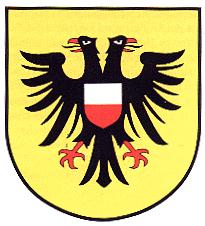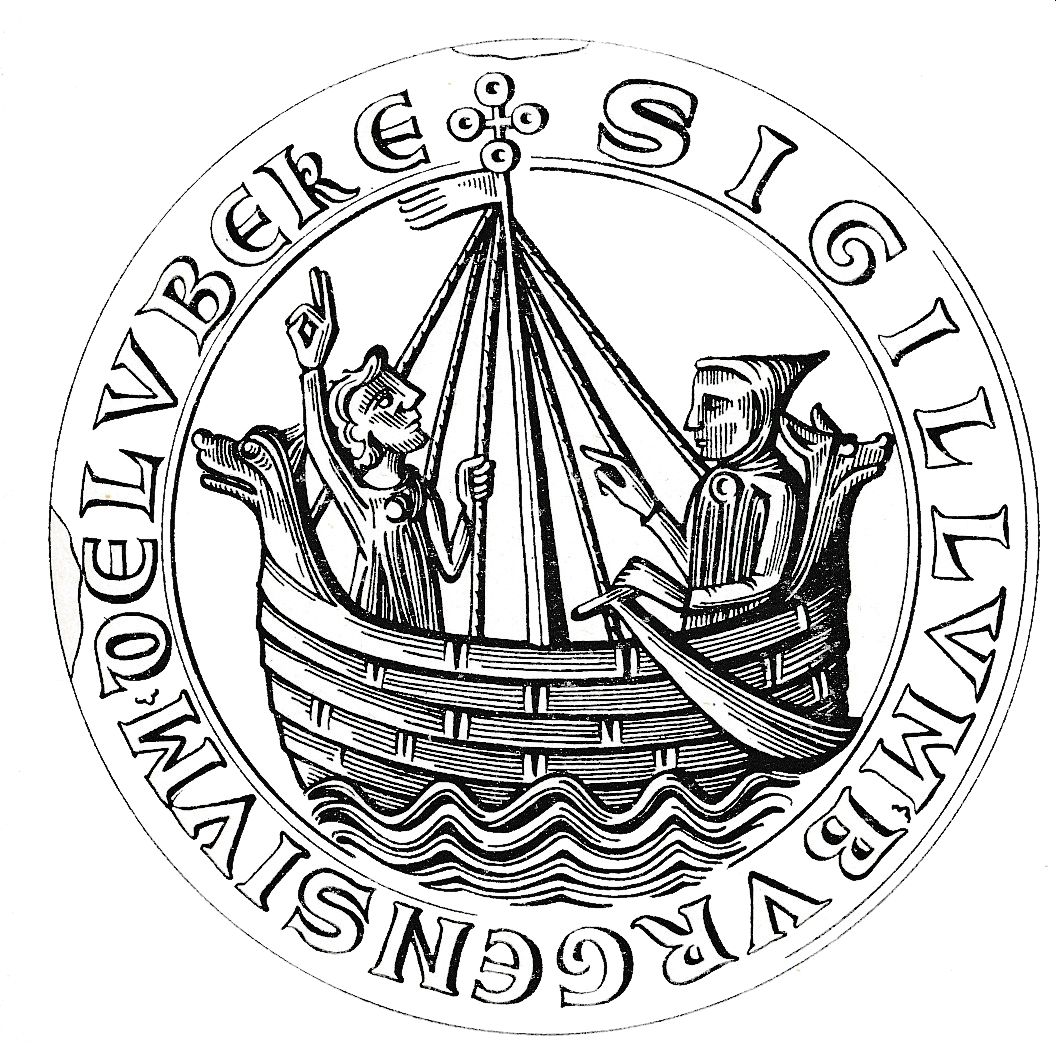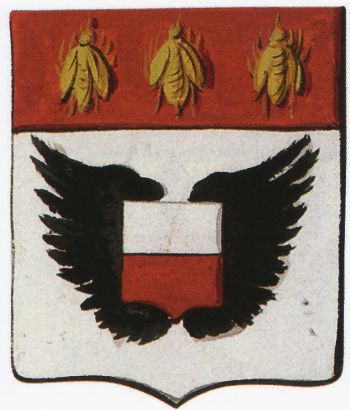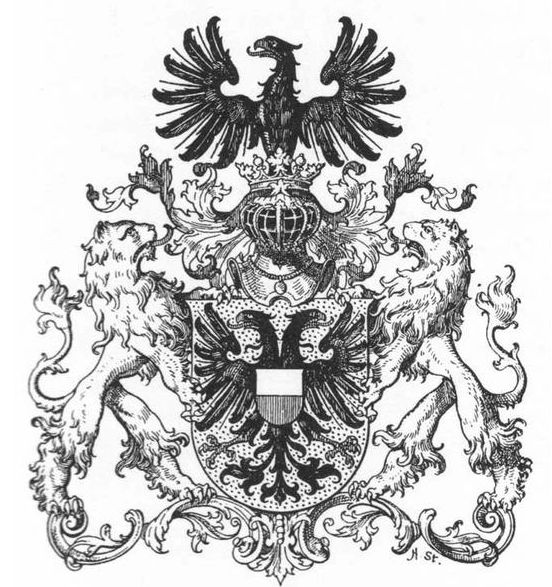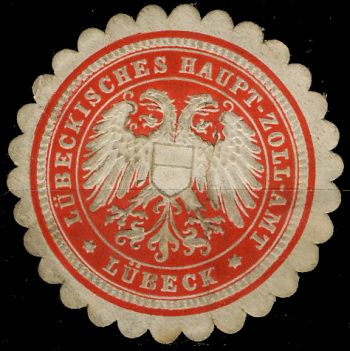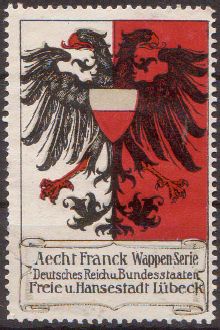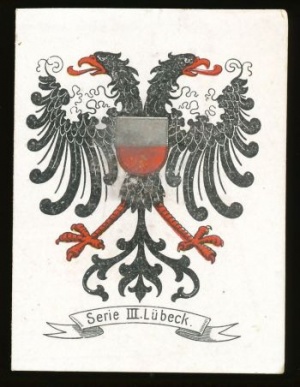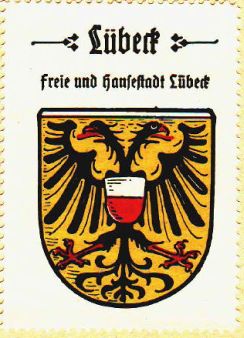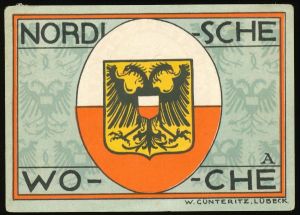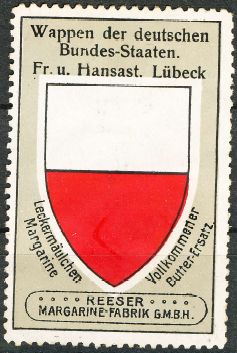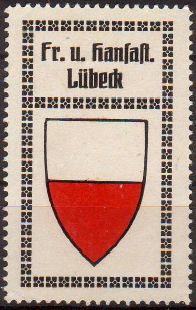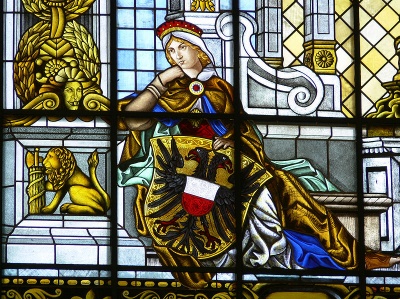Lübeck
This page is part of the German heraldry portal Deutsche Wappensammlung |
Heraldry of the World |
|
German heraldry:
|
Selected collector's items from Germany:
|
LÜBECK
State : Schleswig-Holstein
Urban District (Stadtkreis) : Lübeck
Additions : 1913 Genin, Gneversdorf, Gothmund, Herrenwyk; Israelsdorf (partly), Krempelsdorf, Kücknitz (partly), Moisling, Schlutup, Siems, Travemünde, Vorwerk; 1921 Schönböcken, Wesloe; 1927 Strecknitz; 1935 Beidendorf, Blankensee, Brodten, Dummersdorf, Ivendorf, Kronsforde, Krummesse, Moorgarten, Niederbüssau, Niendorf, Oberbüssau, Pöppendorf, Reecke, Rönnau, Teutendorf, Vorrade, Wulfsdorf
Official blazon
(de) *(1811) D'argent au vol ouvert de sable, chargé d'un écusson coupé d'argent et de gueules; au chef des bonnes villes.
- (1937) In Gold ein rot bewehrter schwarzer Doppeladler mit einem von Silber und Rot geteilten Brustschild. Im großen Wappen halten zwei goldene Löwen den Schild; auf diesem ein Helm mit einköpfigem schwarzem Adler als Zier und silbern-roten Decken.
Origin/meaning
The arms were officially granted on January 26, 1937.
Lübeck was one of the main trading cities on the Baltic and in the whole North of Europe in the Middle Ages. It was one of the founders and the capital of the Hanseatic League, the main league of cities in those days.
The city used two different arms, often combined as double arms, one with the Imperial Eagle, as Lübeck was an imperial city (since 1226, the city was founded in 1143 by Adolph II, Duke of Holstein), and one with a divided shield of red and silver. The origin and meaning of the divided shield are unknown. It may be derived from the banner of the city, which can be seen on seals dating from the 13th century.
| The seal from 1280 in which the banner can be seen on the mast of the ship |
The colours were not only the colours of the city, but also of the whole Hanseatic League. The arms were combined in the present form in the second half of the 15th century and haven't changed since. The only time the arms were changed was during the Napoleonic times, when the city used only the divided shield, on which were placed two wings. The shield also had a chief with three bees, the mark of a city of the first rank. These arms were granted on June 13, 1811.
| The arms by Napoleon |
The great arms of the city show two golden lions as supporters and a helmet with a single-headed eagle as a crest. The colours of the cloth are silver and red.
| The great arms of Lübeck |
Seal from around 1900 |
The arms in collector's items:
| The arms in the Abdulla album, 1928 |
The arms on a trade stamp issued by Aecht Franck +/- 1910 |
The arms in the Continentale Verlags-Anstalt album |
| The arms by Hupp in the Kaffee Hag albums +/- 1925 |
The arms on a Kohl postcard |
The arms on a Notgeld bill from the Nordische Woche, 1920s |
| The arms on a trade stamp by the Reeser Margarinefabrik |
The arms on a trade stamp, 1920s |
The arms on a British tobacco card |
The arms in the city:
| The arms on a gate in the city ([1]) |
The arms in a glass mosaic in the city ([2]) |
Contact and Support
Partners:
Your logo here ?
Contact us
© since 1995, Heraldry of the World, Ralf Hartemink 
Index of the site
Literature : Stadler, 1964-1971, 8 volumes; Reissmann, 1997; Ewe 1972


